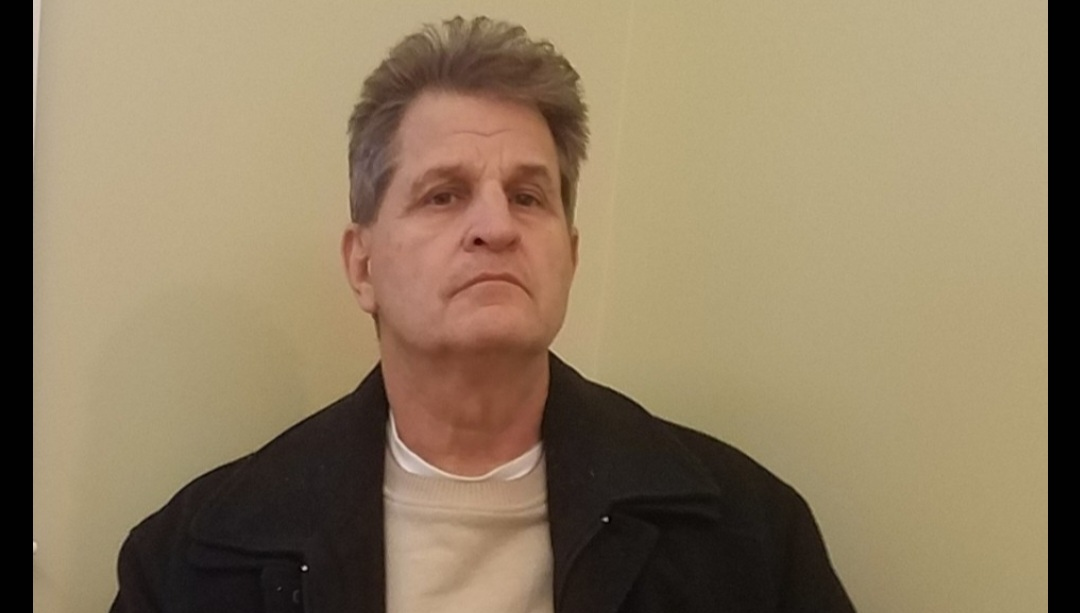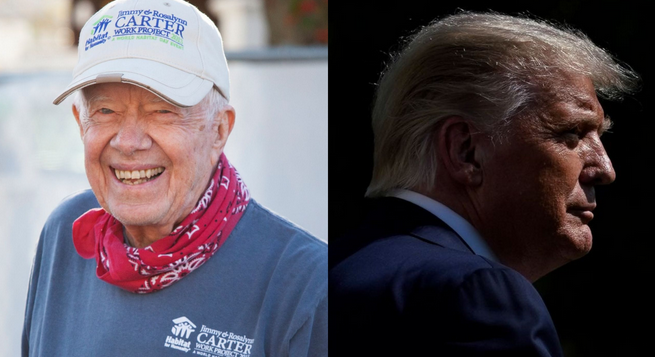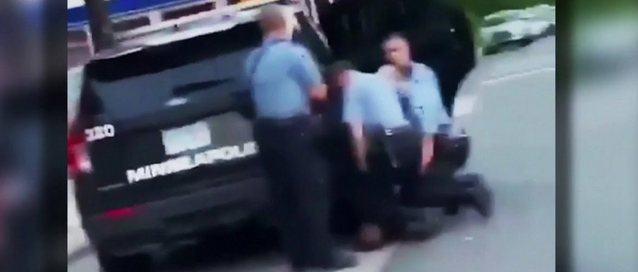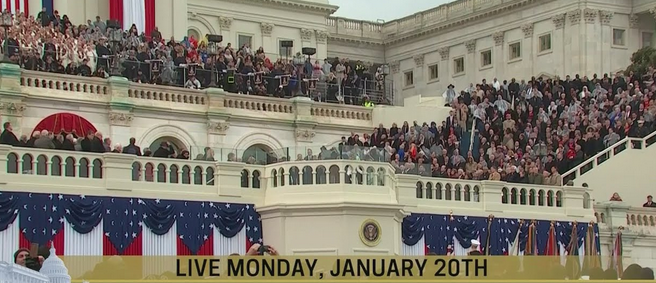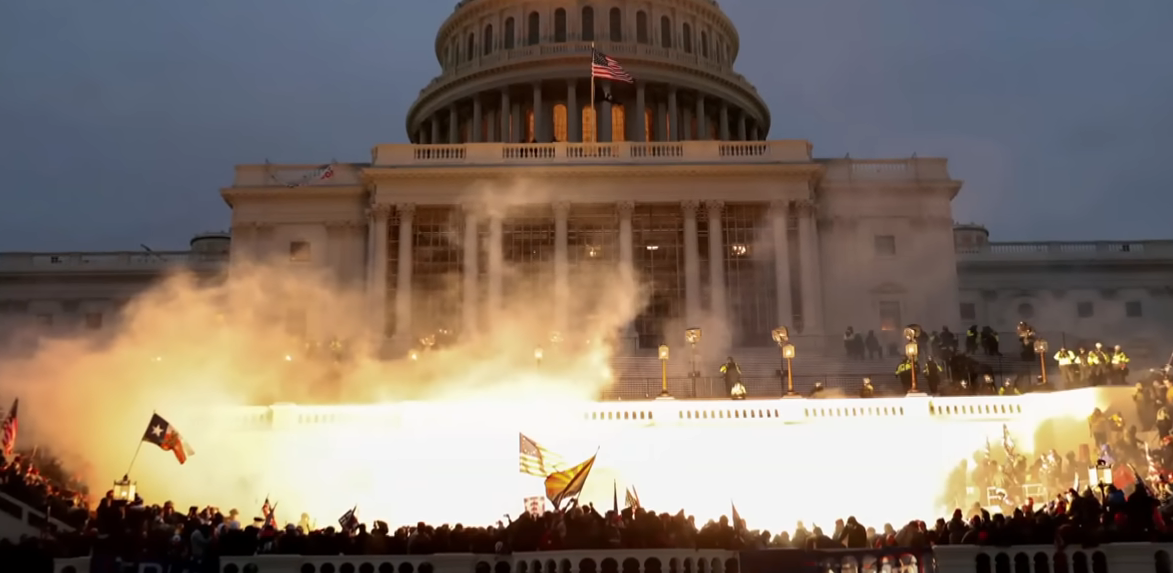Michael Brown’s killer Officer Wilson beneficiary of another Times’ spin; Brown must be spinning in his grave
[Publisher’s Commentary]
There are a number of ways to read the October 17 New York Times story “Police Officer in Ferguson Is Said to Recount a Struggle,” wherein officer Darren Wilson, the killer of 18-year-old Michael Brown, is said to offer his account of what happened — inside the police car, before he chased down Brown and killed him execution-style.
Even though the article ledes with the claim by Wilson that Brown had struggled with him for control of his gun inside the police vehicle, the real thrust of the article is a claim by unnamed “officials” that the justice department doesn’t have much of a case to pursue civil rights charges against Wilson.
It seems to me that Brown’s supporters may know that the grand jury in St. Louis, directed by the not-impartial Robert P. McCulloch, the Prosecuting Attorney for St. Louis County, is about to throw Wilson a Christmas gift — a non indictment.
Wilson of course would still face –as expected– federal charges for violating Brown’s civil rights. So the article seems to be a pre-emptive strike against the justice department’s possible case against Officer Wilson.
By casting doubt on the justice department’s investigation, should the federal government go ahead and press charges against Wilson, it could then be criticized as politically-motivated by Wilson’s supporters. Attorney General Eric Holder’s resignation may also play a role in the timing of the pro-Wilson article — maybe Wilson supporters believe the justice department may no longer pursue the matter as vigorously.
The October 17 New York Times article is just as weak as the one demolished by MSNBC’s Lawrence O’Donnell on August 20 — that article had claimed some witnesses had testified that Brown had charged at Wilson before he was felled in a hail of bullets; which was of course false, unless tumbling forward face down after being shot multiple times, including in the eye, can be characterized as charging forward.
Essentially, the October 17 article is another weak spin job by supporters of Darren Wilson. Whatever account Wilson and and his supporters offer as to what occurred when Wilson was still inside his police vehicle, the officer forfeited any credible argument of self defense when he stepped out of his car and fired multiple shots as Brown was fleeing from him and presented no threat.
He then shot a defenseless and unarmed Michael Brown, execution-style in broad daylight in front of witnesses.
Wilson and his supporters can speak until kingdom come and The New York Times can rewrite what are essentially press releases from Wilson’s supporters into long articles intended to sow doubt as many times as it wants but the fact that Wilson surrendered credible self defense argument after he stepped out of the vehicle will always be unimpeachable.
There are other elements in the article by Michael S. Schmidt, Matt Apuzzo and Julie Bosman that are worth smoking out.
“The police officer who fatally shot Michael Brown in Ferguson, Mo., two months ago has told investigators that he was pinned in his vehicle and in fear for his life as he struggled over his gun with Mr. Brown, according to government officials briefed on the federal civil rights investigation into the matter,” the lede of the story reports.
Let’s ignore what the officer claims to have happened and look at the attribution first since we can’t expect to be informed if Wilson said anything that would incriminate him — the “government officials briefed on the federal civil rights investigation into the matter..”
Who are these government officials? Are they Ferguson police officers? The Times reveals that, “The account of Officer Wilson’s version of events did not come from the Ferguson Police Department or from officials whose activities are being investigated as part of the civil rights inquiry..”
The Times includes this disclaimer because the paper knows readers would want to know whether the Times’ tipsters are disinterested and “objective” commentators.
Yet nowhere does the times say that the information does not come from the St. Louis police department, which faces its own bias issues, or from Robert P. McCulloch, the Prosecuting Attorney for St. Louis County, or his office, or any other party with vested interests in the matter. Many critics have asked McCulloch to step aside, due to his close ties with the local police so the case can be handled by an independent prosecutor. His father, a police officer, was killed by a Black man when he was 12 years old.
Based on the nature of the “information” provided to the Times the source or sources are either supporters of Wilson, or individuals who want him not to be tried and convicted for the execution-style killing of Michael Brown. If they were impartial, for the sake of balance, they would have also provided some information that implicated Wilson.
But even these sources can’t change the actions of Wilson, after the encounter at the window of his car, or inside the car, as he claims, was over. And if, indeed
Wilson “was pinned in his vehicle and in fear for his life as he struggled over his gun with Mr. Brown, according to government officials briefed on the federal civil rights investigation into the matter” as the Times reports, he still faces the same problem — his actions after he came out of the car.
Had Wilson shot and killed Brown at that point, while the officer was still inside his car, he could make up any defense to support his contention that Brown had struggled for his gun and that he was indeed fearful for his life. (Even though, it could be just as true that Brown saw Wilson pulling out the gun, aiming at him through the car window and, fearing for his life, Brown deflected the weapon away with his hands so that Wilson would not kill him).
Officer Wilson became his own worst witness and enemy when he jumped out of his car and fired after Brown who was running away. He had already shot Brown in the hand while he was in the car. Another shot, according to Wilson himself, as retold by The New York Times, had missed Brown.
When Wilson emerged from his car, did he kneel and carefully aim at Brown’s legs to immobilize him so he could not continue to run away? Did he order Brown to stop running or he would shoot?
He did not. He has not said he did so and no witness has said he did so. The Times writers –three worked on this article– don’t raise these critical questions.
These were actions by a man who wanted to kill Brown.
What’s not in dispute is that Wilson fired after a teenager who was running from him and that when the teenager turned around to face him, he shot him several times, including in the eye and on the top of his head, meaning when he was falling down.
Ominously the Times leaves this part (the shots into the eye and top of the head) out of this story. Presumably it would raise questions about why the reporters wrote such a long story about the actions inside the car –all based on Wilson’s narrative and no other witness– when Wilson’s actions afterwards nullified his purported alleged self-defense actions.
Many wordings in the Times article are also objectionable and misleading. Take “The officer, Darren Wilson, has told the authorities that during the scuffle, Mr. Brown reached for the gun,” as an example.
Since these are presumably Wilson’s supporters then in this context referring to them as “the authorities..” is very prejudicial to Brown. Casual readers of the Times and other journalists who then quote the Times’ story could readily conclude that these are actual “authorities” on the case itself and that the observations they are providing the Times are accurate and truthful.
And the Times refers to “the scuffle” when in fact it’s a purported scuffle.
Brown might have also reached for the gun to prevent Wilson from killing him, if indeed he did. Wilson had control of the gun since he fired at Brown and shot him at least once, in the hand, by his own account. It’s possible that Brown felt imminent danger from WIlson who was possibly pointing the gun at him. Forensic investigations should determine this based on the angle of the shot and from where Wilson would have been seated.
There are also many statements in The Times article which the newspaper presents as if exculpatory evidence for Wilson when in fact they are not necessarily.
“The forensics tests showed Mr. Brown’s blood on the gun, as well as on the interior door panel and on Officer Wilson’s uniform,” The Times writes. Why would this be surprising? In fact this could work in Brown’s favor. If someone aims a gun and shoots you point blank from the window of his car, right next to you, why wouldn’t your blood be found inside the vehicle? What’s more, Brown’s blood could have been collected and smeared on the gun and inside the vehicle after he was killed. His body was abandoned for many hours on the streets.
“Officer Wilson told the authorities that Mr. Brown had punched and scratched him repeatedly, leaving swelling on his face and cuts on his neck,” the Times writes. If this is true, this could also be consistent with Brown trying to prevent Wilson from shooting him dead. Recall that Brown had an indication of Wilson’s aggressive mindset. Officer Wilson’s first words after all, according to Brown’s friend, Dorian Johnson, who survived the encounter was for the boys to get the “fuck” off the street. (Moreover an autopsy would have found signs of the struggle on Brown’s body and at the very least on his finger nails; there were no such signs).
The Times then notes, not anywhere close to the lede but deep in the story, that “This is the first public account of Officer Wilson’s testimony to investigators, but it does not explain why, after he emerged from his vehicle, he fired at Mr. Brown multiple times.”
This is an ugly understatement by The New York Times. After he emerged from the police car is the most critical part of the entire encounter and the Times should have emphasized that — but doing that would have diluted the story, or non-story, that the Times was committed to publish.
From the police car, shots fired by Wilson, even if they were wrongful, could be twisted into a credible defense: outside the police car Wilson is guilty of murder.
“In September, Officer Wilson appeared for four hours before a St. Louis County grand jury, which was convened to determine whether there is probable cause that he committed a crime,” The Times continues. “Legal experts have said that his decision to testify was surprising, given that it was not required by law. But the struggle in the car may prove to be a more influential piece of information for the grand jury, one that speaks to Officer Wilson’s state of mind, his feeling of vulnerability and his sense of heightened alert when he killed Mr. Brown.”
This is of course totally misleading, especially for lay readers who don’t follow the case as closely and the Times reporters and editors must be aware of this. There was nothing surprising about Wilson’s decision to testify. Officer Wilson knows that any risks to himself and to his defense by testifying are minimized or eliminated because the man in charge of the grand jury, Robert P. McCulloch, is a pro-police Prosecuting Attorney.
Officer Wilson’s best chance to avoid many years in prison is by getting the jury to refuse to indict him — and this is where McCulloch could deliver. For the Times not to note this (and to make it appear as if Wilson knew the truth, and not McCulloch, could set him free) is beyond negligence and even smells of malice.
So while Wilson has a good chance of getting a gift from McCulloch’s grand jury, danger looms from the justice department. Pre-attacking the federal case is the strategy. That’s why the Times is being fed the information, which upon careful analyses, are not as impactful as Wilson’s supporters believe and the Times’ story implies.
The Times knows that Wilson’s actions, killing Brown as he stood at a distance — already bleeding from the hand wound and realizing he could not escape and therefore surrendering– is a problem. So the newspaper makes another pitch:
“Police officers typically have wide latitude to use lethal force if they reasonably believe that they are in imminent danger,” The Times further writes.
Nevertheless, reasonable people might conclude that this “wide latitude” may not cover an officer emerging from his car and firing after a fleeing teenager and then killing him in a hail of bullets when he stops to face the officer and surrender.
Here are the most important statements from Wilson’s supporters — these are the words they wanted printed in the Times:
“The officials said that while the federal investigation was continuing, the evidence so far did not support civil rights charges against Officer Wilson. To press charges, the Justice Department would need to clear a high bar, proving that Officer Wilson willfully violated Mr. Brown’s civil rights when he shot him..”
High bar? Shooting an unarmed man who has stopped running and surrendered is not willful violation of Brown’s civil rights? Was the Times experiencing a Dred Scott moment?
And who are these “officials” again? The way these sentences are pieced together, a careless reader could get the impression that the Times was actually referring to officials from the justice department itself. Didn’t editors at the Times notice this or did it not matter to them?
The New York Times adds: “In the many accounts of Mr. Brown’s death, the most potent imagery has come from his final moments, when he and Officer Wilson faced each other on Canfield Drive. Some witnesses have said that he appeared to be surrendering with his hands in the air as he was hit with the fatal gunshots. Others have said that Mr. Brown was moving toward Officer Wilson when he was killed.”
Here the Times is being disingenuous. The paper is still trying to rehabilitate the earlier article demolished by Lawrence O’Donnell. The Times tries to give the impression that there are witnesses who say Brown was running towards Wilson, in a threatening manner, when it uses the term “moving toward” Wilson, when in fact Brown was plunging on his death fall. This is vile because it’s intentionally misleading on the part of the Times.
Moreover they aren’t “potent imagery” they were potent eye witness accounts.
“Few witnesses had perfect vantage points for the fight in the car, which occurred just after noon on Aug. 9. Mr. Brown was walking down the middle of the street with a friend, Dorian Johnson, when Officer Wilson stopped his S.U.V., a Chevy Tahoe, to order them to the sidewalk,” the New York Times writes, factually, before tacking on its own version of gospel truth, “Within seconds, the encounter turned into a physical struggle, as the officer and Mr. Brown became entangled through the open driver’s-side window.”
The only good thing is that here the Times itself concludes that Brown was actually not inside the car, as Wilson and his supporters imply in order to buttress their spin. But how does the Times know that “the encounter turned into a physical struggle, as the officer and Mr. Brown became entangled..” as Wilson and his supporters want people to believe?
How does The New York Times know that, in fact, it could have been something else? Perhaps the encounter could have turned into Brown’s desperate effort to push the gun aimed at him away so he would not be killed. This is very different than being “entangled” in a “physical struggle.”
At the end of the day, entanglement or no-entanglement, Officer Wilson sealed his fate when he shot multiple times at a teenager who was running and presented no threat and then stood at a distance and surrendered.
Officer Wilson had the power to arrest Brown and to take him into custody.
He also had the capability — not the power or the right– to terminate the teenager’s life. No matter how angry he might have been, he should not have killed Brown.
Wilson must answer for killing Michael Brown execution-style, before a trial jury, not before friendly reporters from The New York Times.

